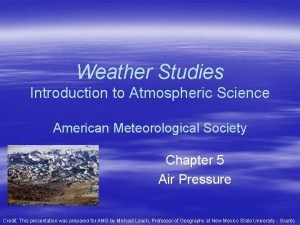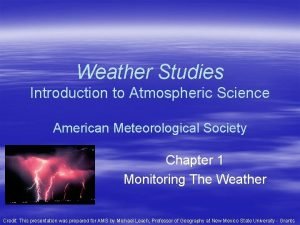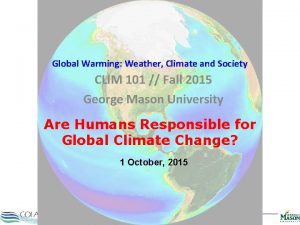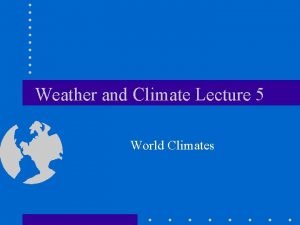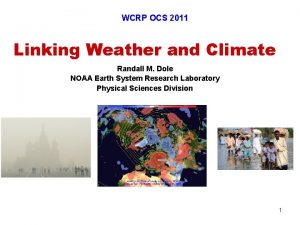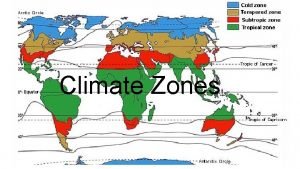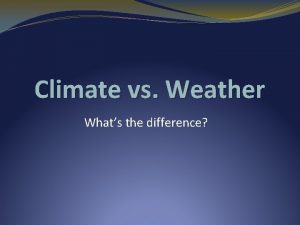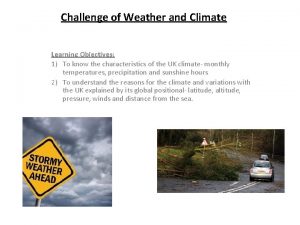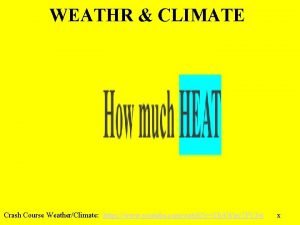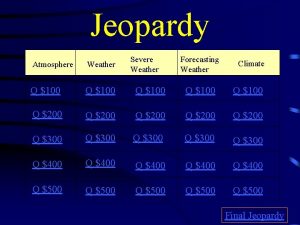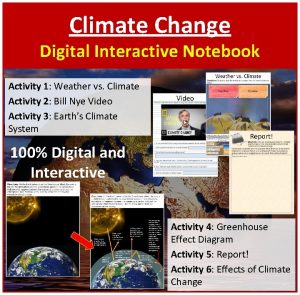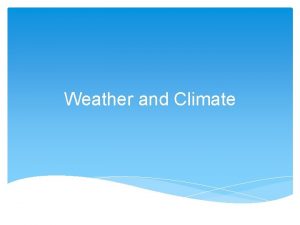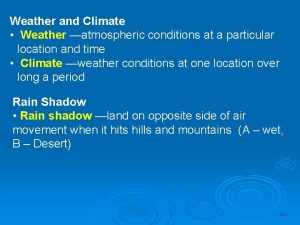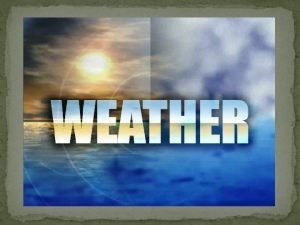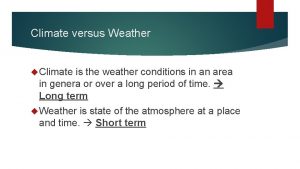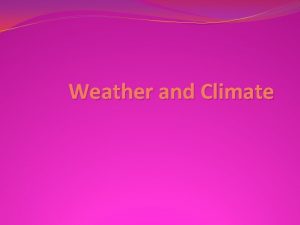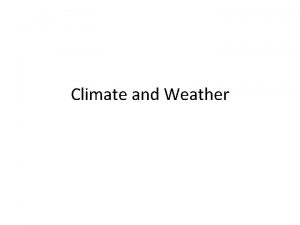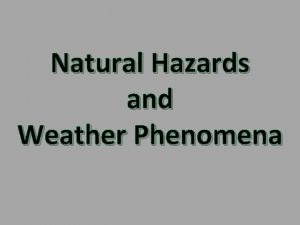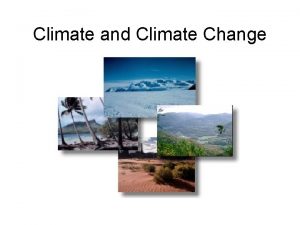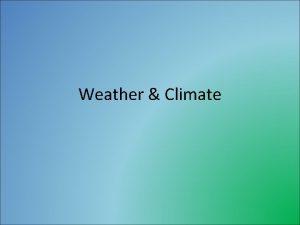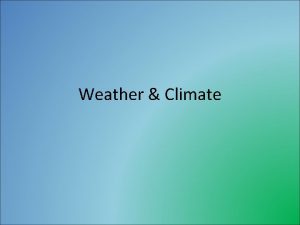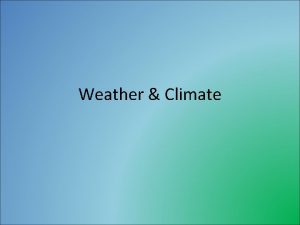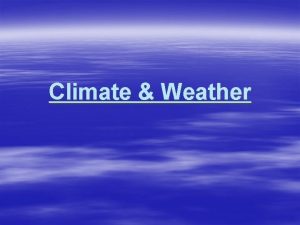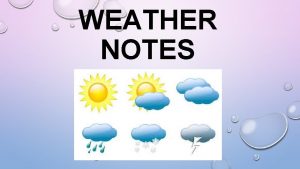Weather and Climate Weather is the atmospheric conditions


















- Slides: 18

Weather and Climate

Weather is the atmospheric conditions, along with short -term changes, of a certain place at a certain time. WEATHER It can be described using many different VARIABLES, including: Air temperature Air pressure Wind speed / direction Humidity Cloud coverage Precipitation This Photo by Unknown Author is licensed under CC BY-NC-ND

Air Temperature The measure of the average KINETIC ENERGY of molecules in the air. When temperature is HIGH, air molecules move quickly and have HIGH kinetic energy. When temperature is LOW, molecules move slowly and have LOW kinetic energy.

Air Pressure AIR PRESSURE is the pressure that a column of air exerts on the air or a surface below it. Air pressure DECREASES as altitude INCREASES. Air pressure is measured with a barometer.

Wind is created as air moves from areas of high pressure to areas of low pressure. Wind speed is measured with a device called an anemometer.

Humidity HUMIDITY air. is the amount of water vapor in the Temperature determines the maximum amount of moisture the air can hold (hotter places tend to be more humid). Humidity is measured using a device called a psychrometer.

Cloud Coverage A mass of warm air carrying water vapor will rise up in the atmosphere. As it rises, it cools and the water vapor it carries condenses into a cloud. Clouds can have different shapes and be present at different levels of the atmosphere.

Stratus Clouds Flat, white, layered Can be found up to 2, 000 m

Cumulus Clouds Fluffy (like cotton balls) Can be found from 2, 000 – 6, 000 m

Cirrus Clouds Wispy and thin Can be found above 6, 000 m

Precipitation PRECIPITATION is water, in liquid or solid form, that falls from the atmosphere. Some examples of precipitation are: Rain Sleet Snow Hail

Climate CLIMATE is the long term average weather conditions that occur in a particular region. Climate depends on: Average temperature Average precipitation Latitude Altitude

Latitude Because of the curvature of the Earth, the amount of solar energy a location receives depends on its latitude. Locations that are closer to the equator (0°) receive MORE solar energy and are generally warmer than areas father from the equator.

Altitude Remember that temperature decreases as altitude increases within the troposphere. The higher off Earth’s surface you go, the colder the climate will be.

Rain Shadows A RAIN SHADOW is an area of low rainfall on the downwind slope of a mountain. Mountains influence climate because they are barriers to wind. This leads to changes in precipitation patterns, often called a rain shadow. Rain shadows affect the type of plants and animals that live on either side of the mountain.


Specific Heat of Water SPECIFIC HEAT is the amount of thermal energy needed to raise the temperature of 1 kg of material by 1° C. The specific heat of water is 6 times the specific heat of sand, meaning that water has to absorb 6 times as much heat to be the same temperature as sand. This means that areas near large bodies of water (like the ocean) tend to have constant climates, compared to places more inland (away from water).

How Does Climate Affect Living Organisms? Plants and animals have adaptations to their environment. Ex: Polar bears living in very cold climates have developed thick fur and lots of fat to keep warm. Ex: The leaves of oak trees change color in Autumn and drop to the ground during Winter. Climate helps to determine which crops humans are able to grow, or where humans can live.
 What are weather variables
What are weather variables Weather studies introduction to atmospheric science
Weather studies introduction to atmospheric science American meteorological society
American meteorological society Climate change 2014 mitigation of climate change
Climate change 2014 mitigation of climate change World geography today
World geography today Clim 101
Clim 101 What is this
What is this Cimates
Cimates Conclusion of weather and climate
Conclusion of weather and climate 12 climate zones map
12 climate zones map Whats the difference between weather and climate
Whats the difference between weather and climate Objectives of weather and climate
Objectives of weather and climate Weathr
Weathr Weather and climate video
Weather and climate video What single factor controls humidity
What single factor controls humidity Weather and climate jeopardy
Weather and climate jeopardy Weather and climate interactive activities
Weather and climate interactive activities Instruments used to measure weather and climate
Instruments used to measure weather and climate Cloud nine idiom
Cloud nine idiom

